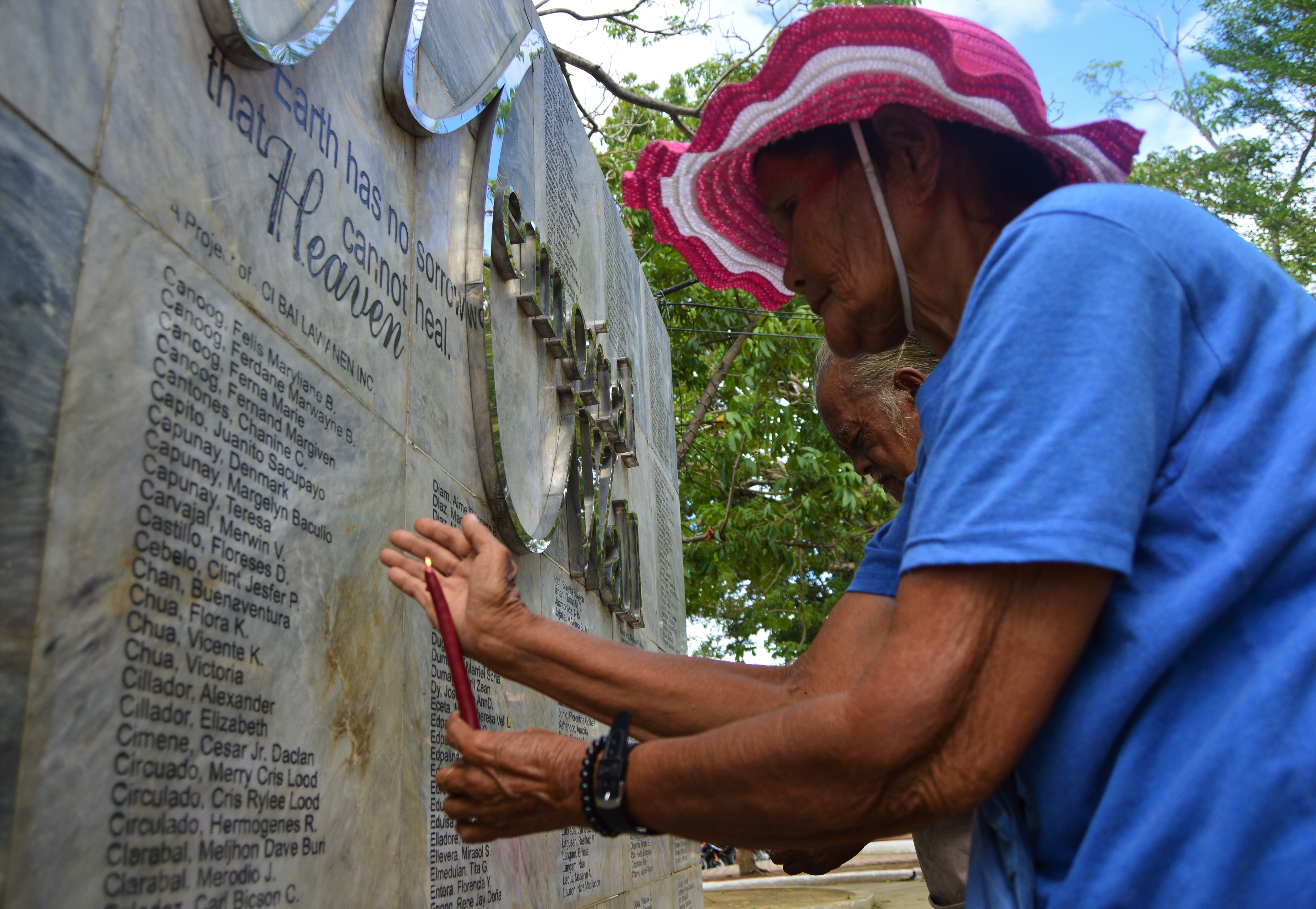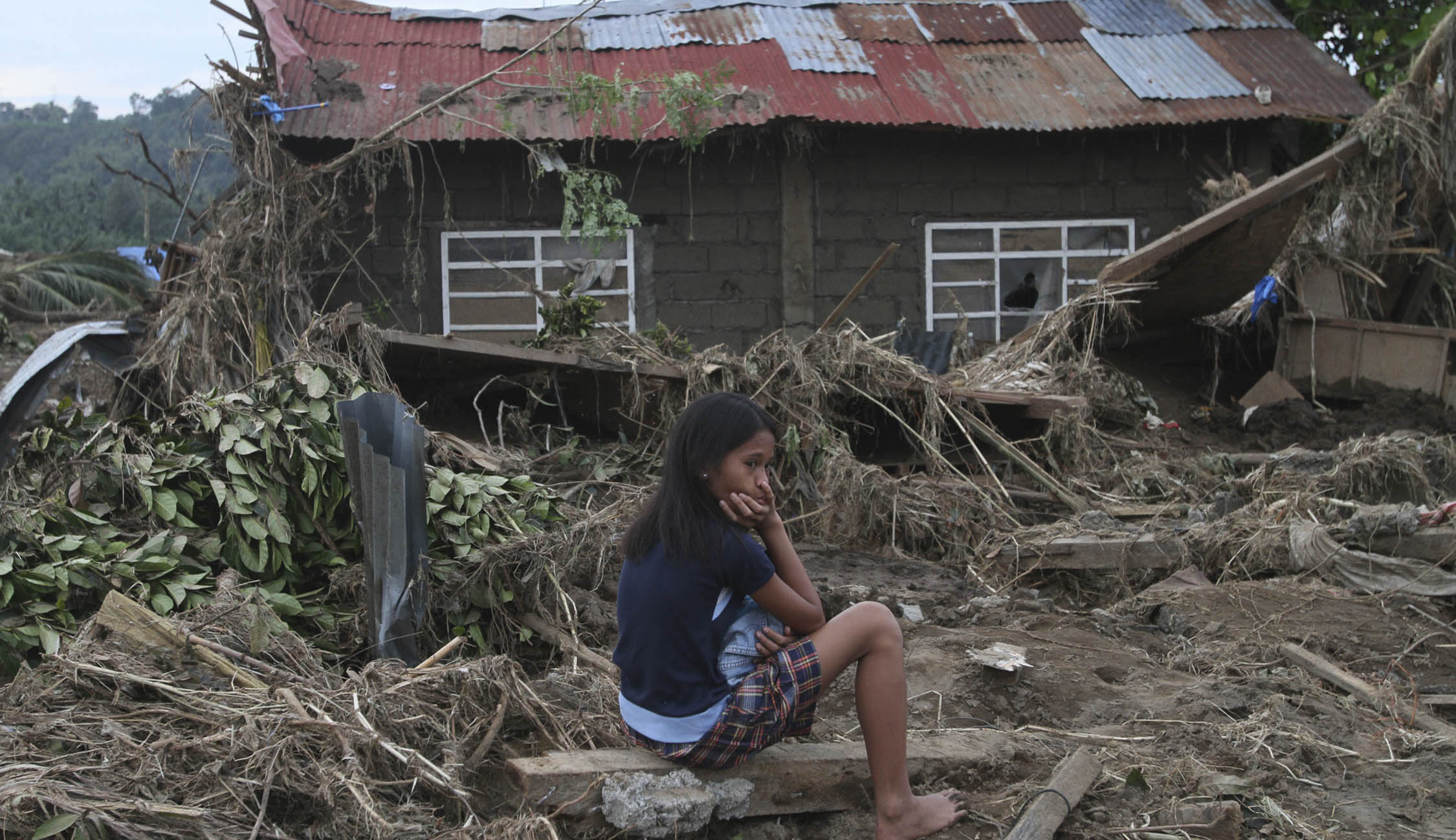‘Sendong’ survivors must own home lots, says mayor

REMEMBERING Norma Acuña, who survived the floods that hit Cagayan de Oro eight years ago, lights a candle and offers prayers at a memorial wall at Gaston Park to remember those who died in the city at the height of Tropical Storm“Sendong.” —JIGGER J. JERUSALEM
CAGAYAN DE ORO CITY, Misamis Oriental, Philippines — Norma Acuña, 72, sells candles outside the St. Augustine Metropolitan Cathedral here, priced from a peso to P10 apiece, to earn a living.
Acuña, a widow living in Zone 6 at Barangay Bulua, is among those who survived the massive floods wrought by the weak but rain-heavy Tropical Storm “Sendong” (international name: Washi) eight years ago.
Her house was washed away by the rampaging waters that came in the dead of night.
Today, she has rebuilt her life on the same spot where her family’s house once stood.
Resettlement
But unlike Acuña, over 4,000 families are still uncertain about the status of their houses in relocation sites.After the tragedy, the local government had resettled more than 6,000 families in 28 relocation sites in the city. Eight years on, the families have yet to receive titles for the lots over which their houses were built.
Article continues after this advertisementMost of these families used to live in informal settlements along riverbanks, which were wiped out by Sendong’s floods.
Article continues after this advertisementOthers were beneficiaries of the housing program of the local government in communities built on river sandbars that, even if unsafe for settlement, was permitted by the previous leadership.

CAGAYAN DE ORO TRAGEDY In 2011, residents of riverside communities in Cagayan de Oro City were displaced when massive floods, induced by heavy rain dumped by Tropical Storm“Sendong,” submerged parts of the provincial capital of Misamis Oriental. —EDWIN BACASMAS
The number of settlers
in hazard-prone communities swelled through the patronage-driven “piso-piso” housing program, which practically doled out houses to beneficiaries. Many of those who died in the tragedy came from these communities.
Mayor Oscar Moreno said the apprehensions of families were understandable as the home was the most important pillar in rebuilding their lives after a tragedy.
Moreno instructed the City Housing and Urban Development Department (CHUDD) to hasten the processing of land titles for the survivors.
Lot owners
He noted that although most of the Sendong survivors had already availed of relocation housing, still the lot titles had yet to be awarded to them, citing technical and legal requirements that needed to be fulfilled.
Moreno said it was not enough that they were given decent shelters, as he emphasized that the survivors must also hold the titles to the land that they are living on.
“Until we give all the lot titles to every beneficiary, our mission is not accomplished,” Moreno said.
Moreno acknowledged that some families had been attending the commemoration of the tragedy for the past seven years so they could follow up on the release of their titles.
Engineer Ermin Stan Pimentel of CHUDD said his office had processed the lot titling for only seven of 28 relocation sites.
Moreno said the city was aiming to distribute the lot titles to the rest of the survivors by next year.
—With a report from Ryan D. Rosauro